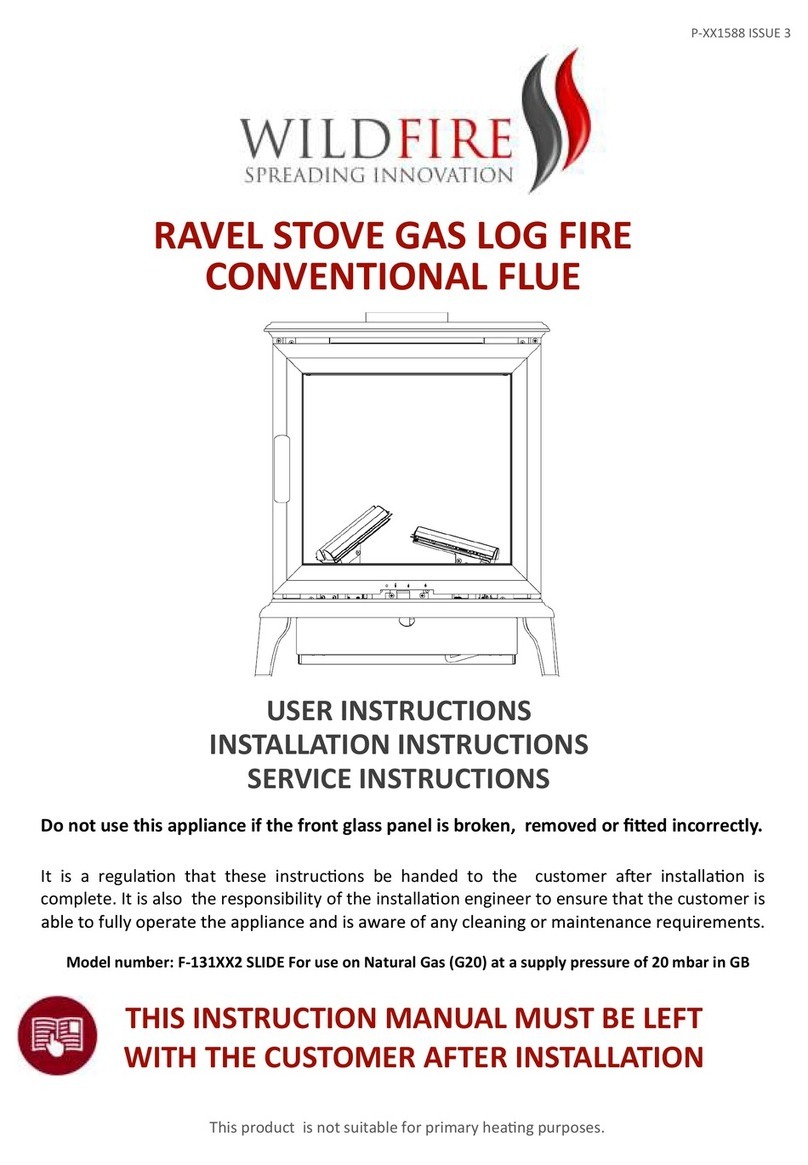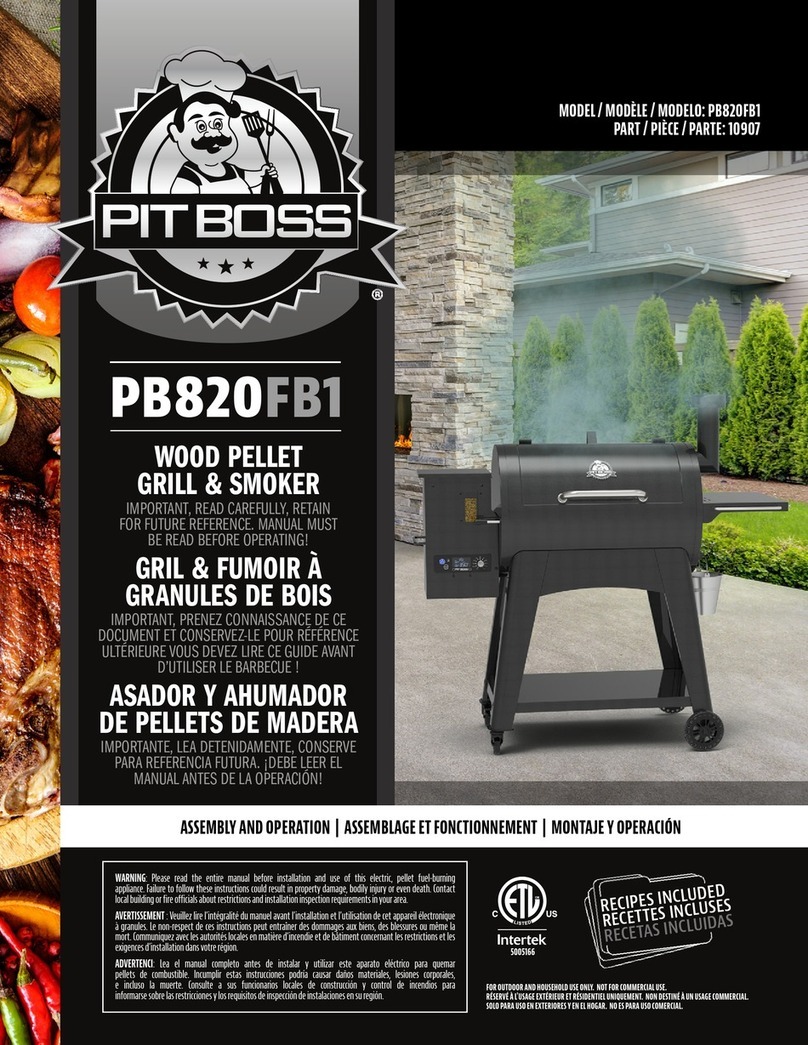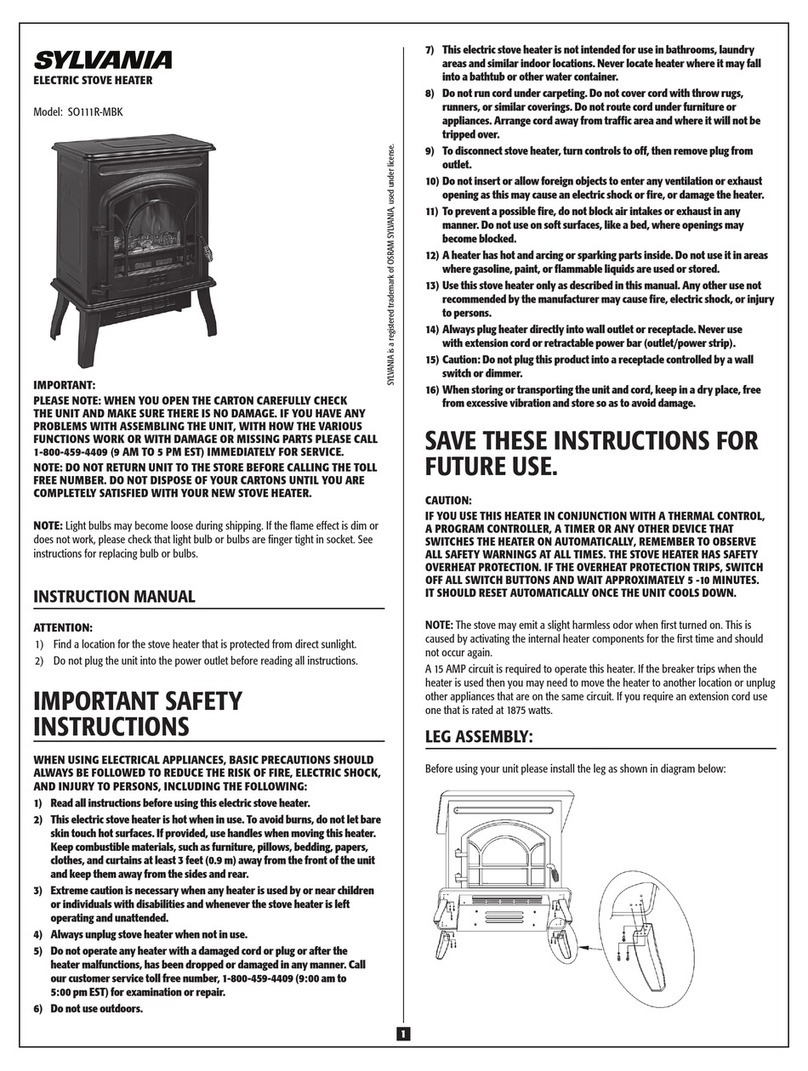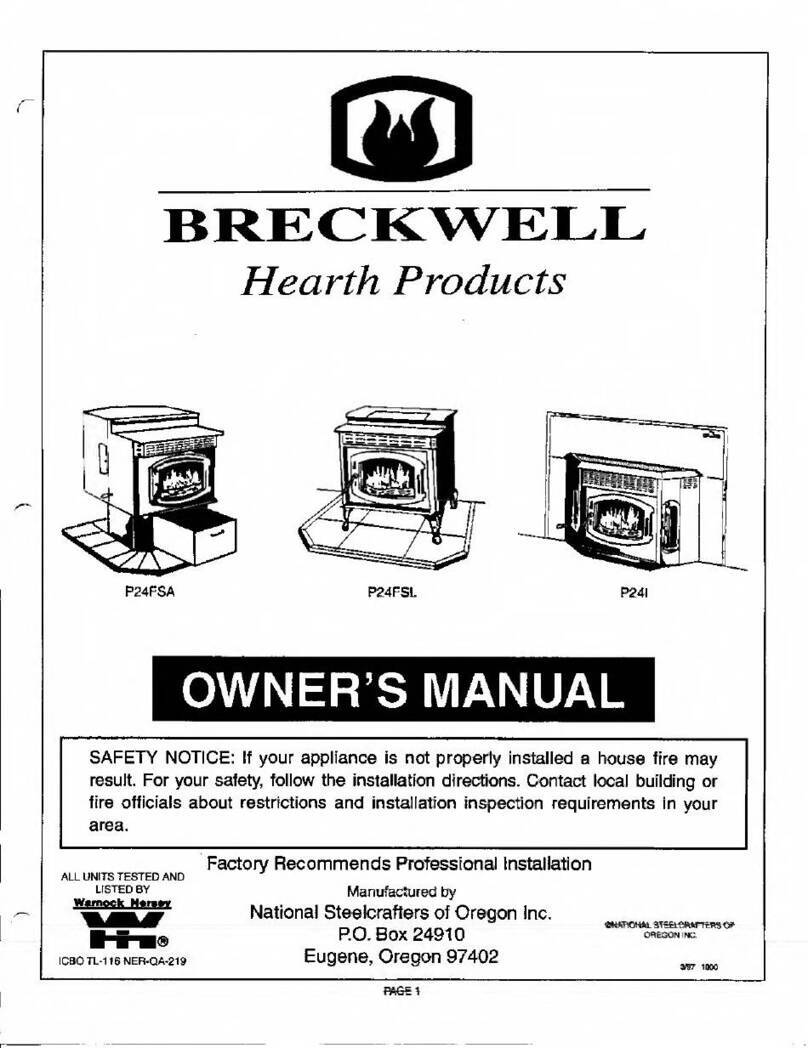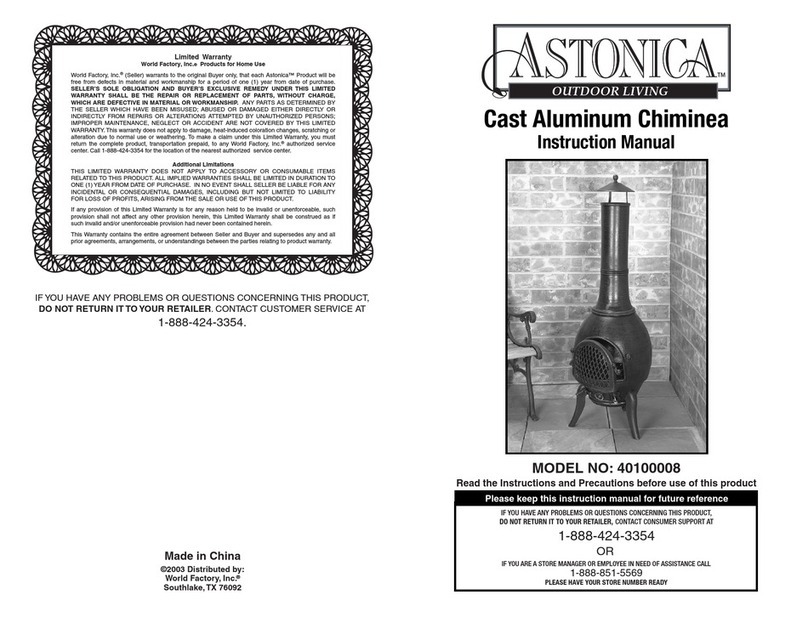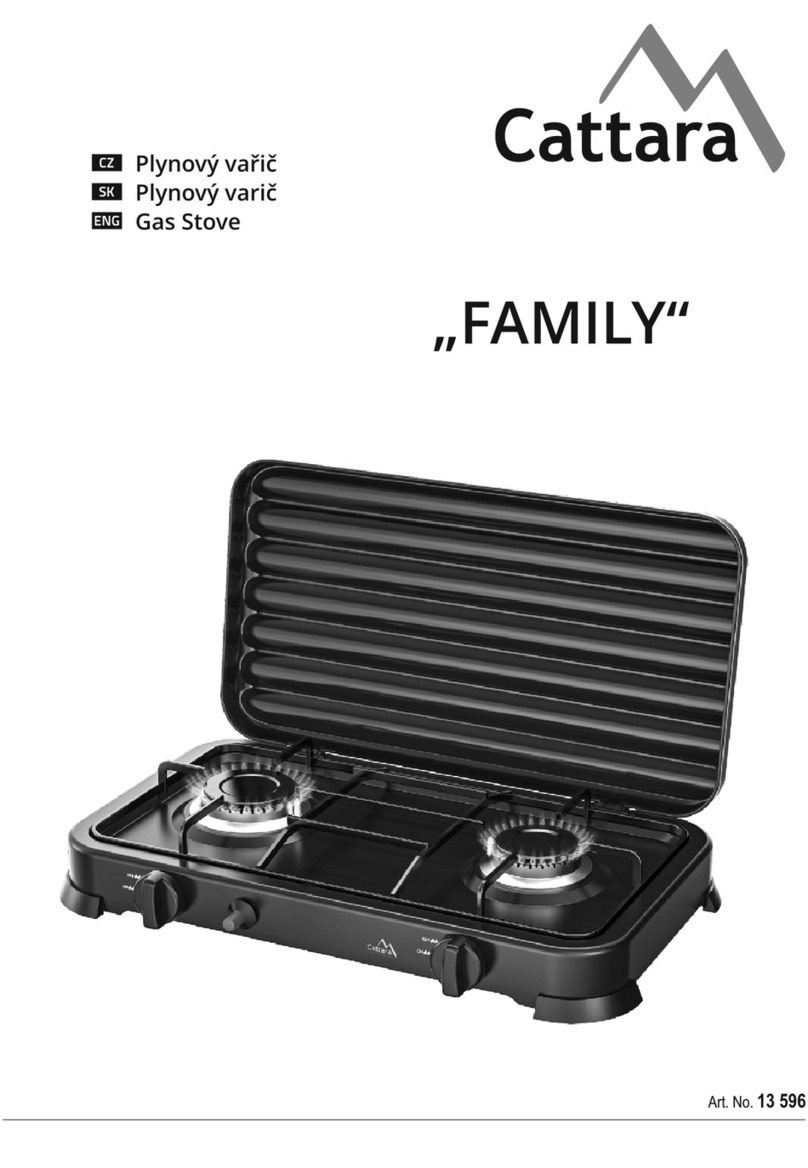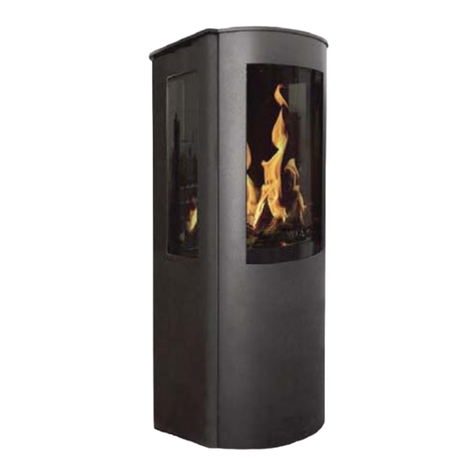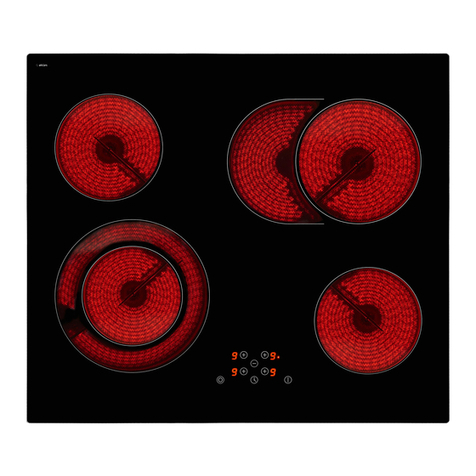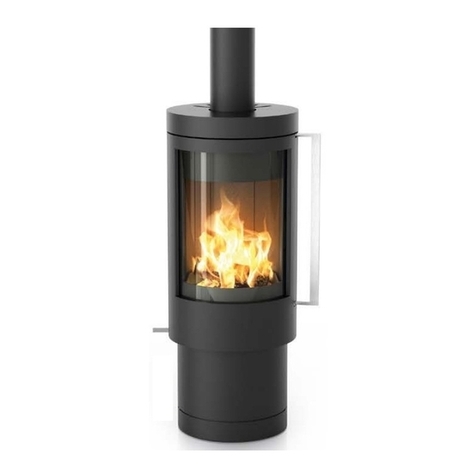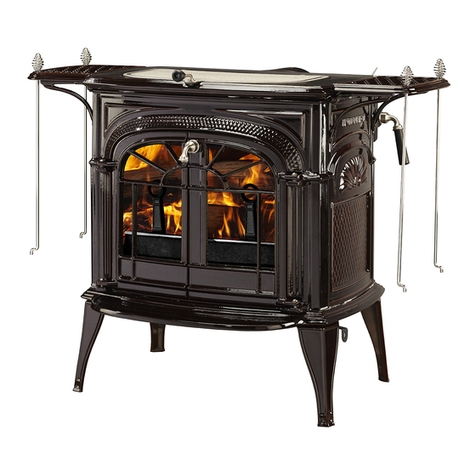Page 3
4) Move your Kitchen Queen to the desired location and on top of a class 1 floor protector. The floor
protector may not be installed on a carpeted surface.
5) The left rear leg is adjustable. Screw the adjusting bolt down until the stove stands solidly.
Fasten the stainless steel rods to the front and sides of the stove using the 1-1/4 spacers and secure with
the 6-1/4 x 2-1/2 stove bolts. The bolts and spacers are inside the long rod.
The shelf under the firebox and oven doors is installed by sliding it into the slots under the stove. You
might have to use a wood block to tap it into place.
Be sure to understand your new stove instructions by reading them several times. Installation must
comply with all local and national building codes. The proper authorities (i.e. the municipal building
department, fire department or fire prevention bureau) should be consulted before installation to
determine the need to obtain a permit. If the stove is not properly installed, a house fire may result. To
reduce the risk of fire, follow the installation instructions. Failure to follow instructions may result in
property damage, bodily injury or even death.
Use 24 Gage black or blue chimney connector or listed double wall connector. The steel ¼ x 1-1/4 flue
collar at the rear center of the stove accepts a 6-inch pipe, crimped end down. Fasten the pipe using
three screws through the holes in the collar and each adjoining section. A chimney height of at least 15
feet measured from the floor on which the stove stands is required. The chimney must be in good
condition and installed according to manufacturer’s instructions. The stove must be connected to a
chimney complying with the requirements for type HT (2,100 degrees F) chimneys per UL 103 or
ULCS629 or a code-approved masonry with a flue liner. (See page 9) The chimney size should be 2
times greater than the cross-sectional area of the flue collar.
CREOSOTE AND NEED FOR REMOVAL
When wood is burned slowly, it produces tar and other organic vapors, which combine with expelled
moisture to form creosote. The creosote vapors condense in the relatively cool chimney flue of a slow-
burning fire. As a result, creosote residues accumulate on the flue liner. When ignited, this creosote
makes an extremely hot fire. The chimney connector and chimney should be inspected at least every 2
months during the heating season to determine if a creosote buildup has occurred. If creosote has
accumulated, it should be removed to reduce the risk of a chimney fire.

